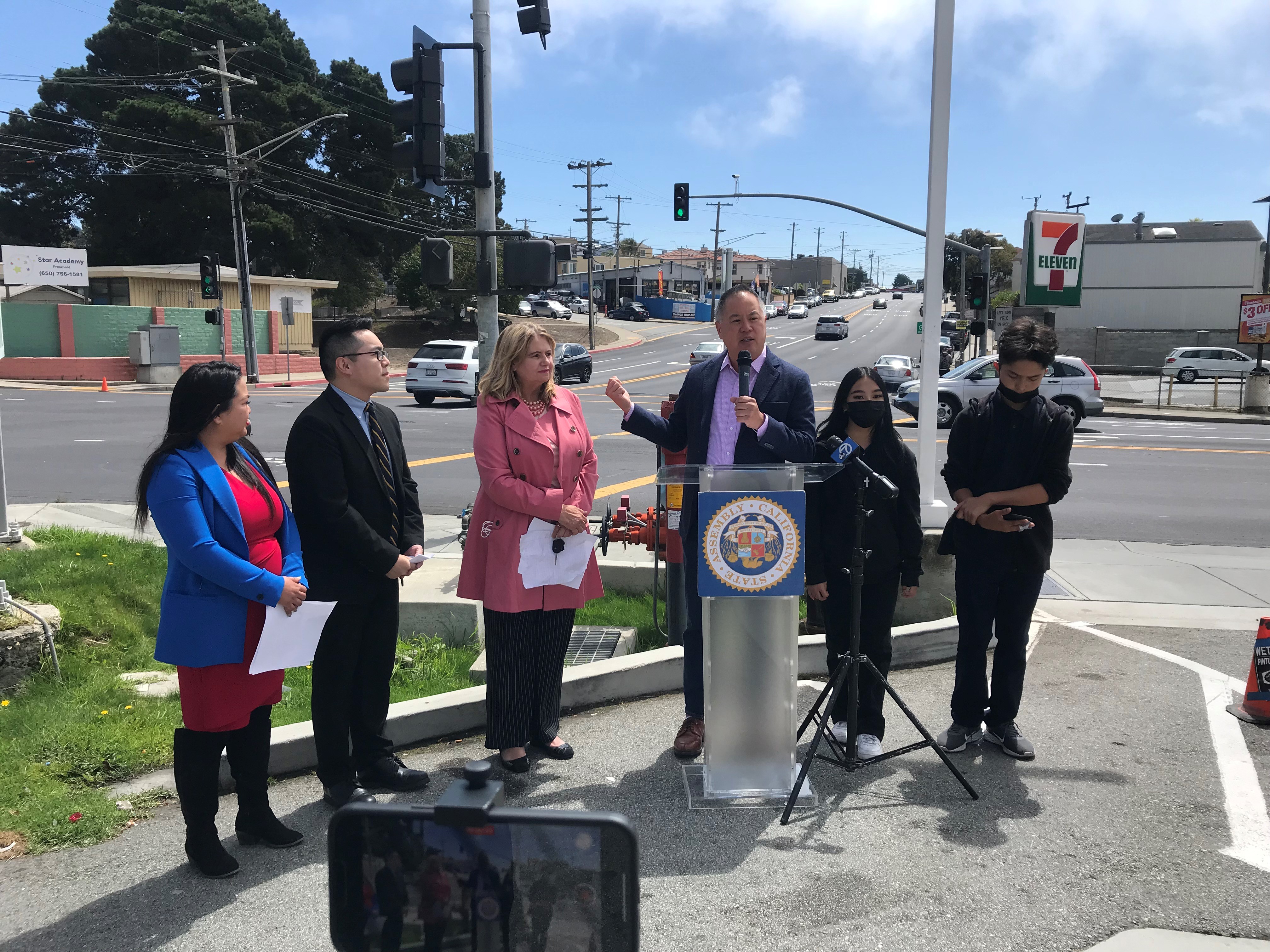
Two weeks into the new school year at the Jefferson Elementary School District, teachers, parents and students received welcome news that the state will help make commutes safer. Assembly Budget Chair Phil Ting (D-San Francisco) announced $3.2 million from the state budget for the Daly City Safe Routes To School project. It entails wider sidewalks, higher visibility crosswalks, shorter crossing distances and other general improvements for increased pedestrian and bicycling safety.
“In order to meet our climate change goals and instill healthy habits in our kids, we must make walking or biking to and from school viable. But these options must be safe,” said Ting, whose district includes northern San Mateo County. “Communities of color often don’t get the transportation infrastructure they need, and I’m thrilled I could secure the funding that will be impactful for generations.”
The Daly City Safe Routes to School project focuses on the areas around Thomas R. Pollicita Middle, John F. Kennedy Elementary and Susan B. Anthony Elementary schools. All three campuses are located on or near East Market Street, a busy corridor that connects the eastern and western parts of Daly City. With state and local funds combined, this is the city’s largest school safety improvement project in recent years, if not ever, to make walking & biking safer, while also slowing drivers down.
“We live near our schools, but there are some streets and intersections that make kids nervous because there can be many cars,” said Rhianjoy Matic and Santiago Sanchez, students at Pollicita Middle School. “We want better protections when we walk or bike.”
“As a member of the Safe Routes to School Committee, I applaud Assemblymember Ting for following through on my call to fund our injury prevention and public safety efforts for our children and their families,” said Daly City Councilmember Pamela DiGiovanni.
“In Daly City, many of our children walk or bike to school; it’s a healthy and active way to commute that our City encourages. Over the last few years, we have built a strong coalition with the County of San Mateo, our local schools, parents, and students who have worked with us to identify safety needs. Now it’s time to put that work into action with the support of Assemblymember Phil Ting, as we launch construction of our Safe Routes to School project with new bulb-outs, high visibility crosswalks, and other improvements along the routes those children take to school” said Daly City Councilmember Juslyn Manalo.
Commuting on foot or by two wheels helps fight childhood obesity & reduces emissions when fewer cars are on the road. But, local leaders and families have been concerned for years about the safety of the children who walk or bike to school. According to Daly City’s 2020 Vision Zero Action Plan, most campuses are located within a quarter-mile of the High Injury Network – defined as city streets where serious injuries and fatalities occur most frequently. On top of that, a recent audit by the San Mateo County Office of Education found Daly City has two of the county’s five most dangerous school areas with the highest incidence of bike and pedestrian collisions occurring in high-poverty neighborhoods.
“Because of their close proximity, many of our students choose to walk to and from their schools. This state partnership not only improves our infrastructure, but also enhances pedestrian safety for our students and residents. We thank Assemblymember Ting for his efforts to help our community in keeping our kids safe and active,” said Clayton Koo, Jefferson Elementary School District Trustee.
An added benefit, the project will improve ADA access and install new curb ramps to facilitate safer access for the nearby pre-schools and senior housing. The Daly City Safe Routes To School is expected to begin the design phase of the safety improvements at the end of year.